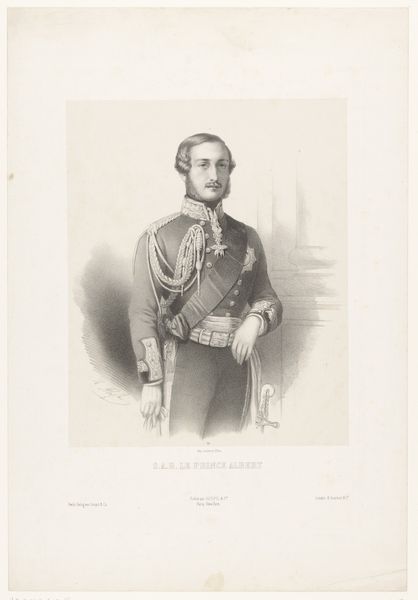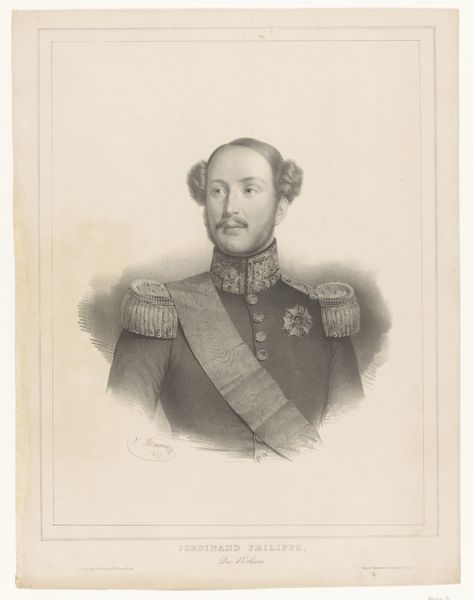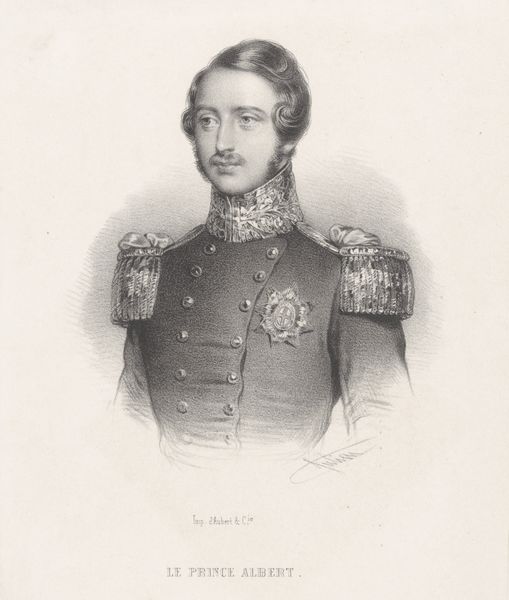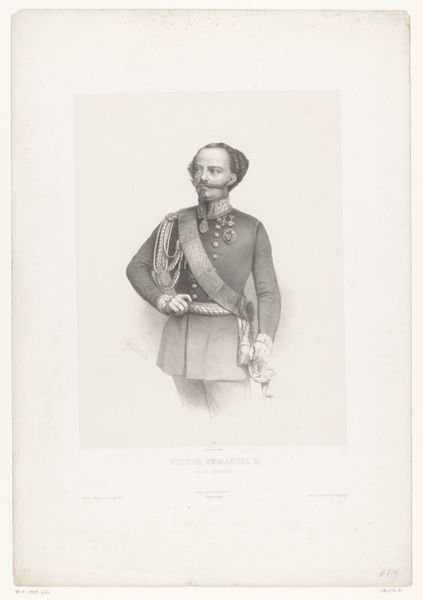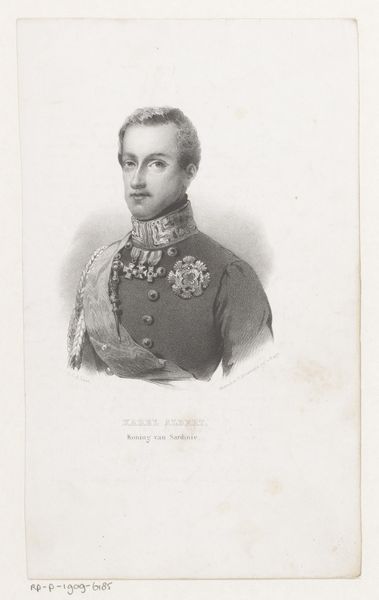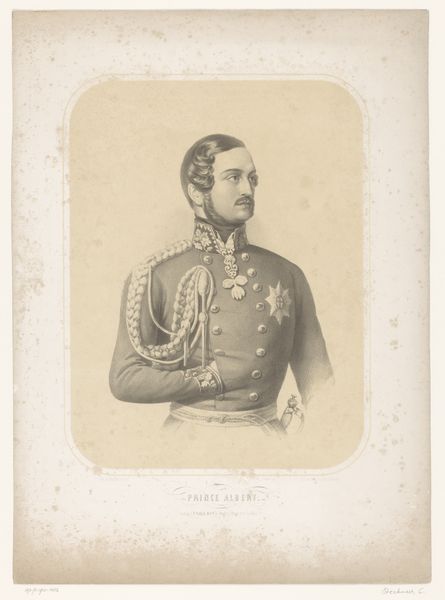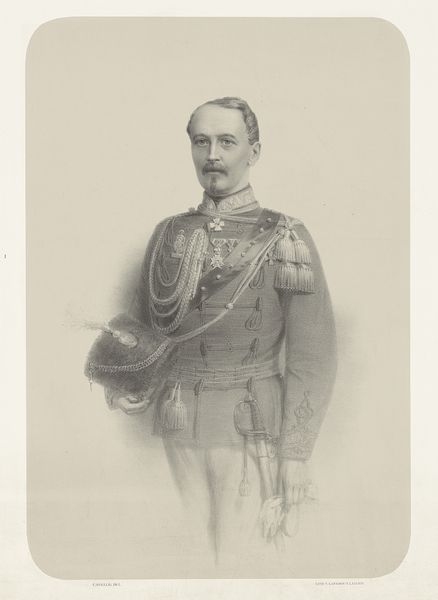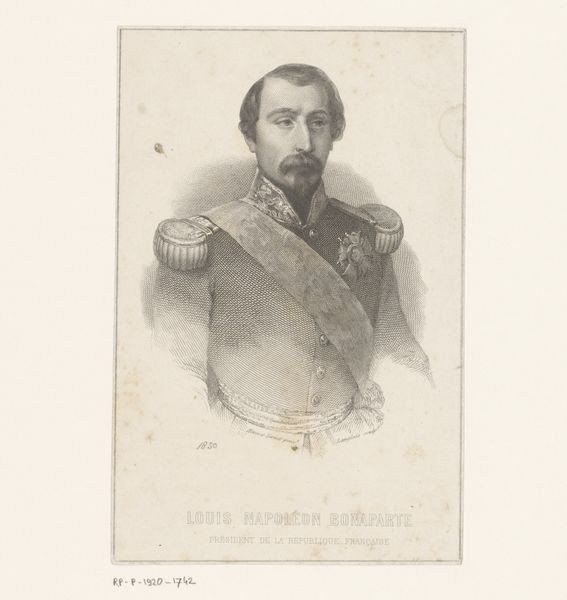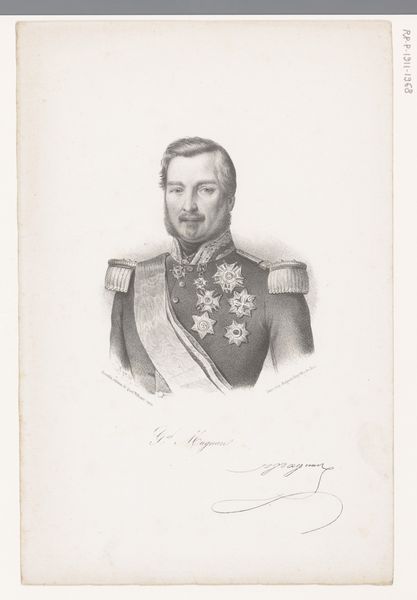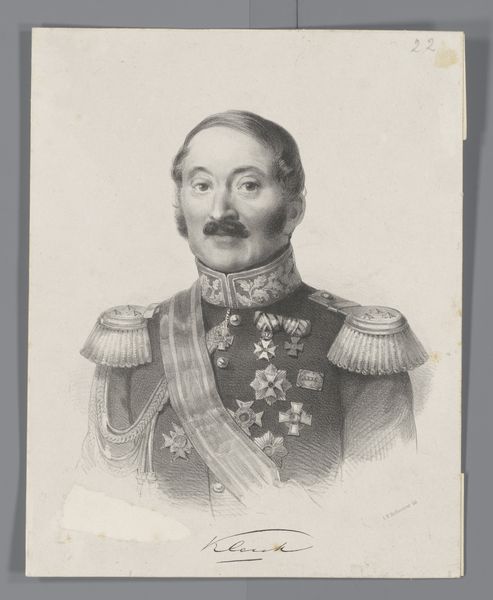
print, engraving
#
portrait
# print
#
history-painting
#
engraving
#
realism
Dimensions: height 362 mm, width 253 mm
Copyright: Rijks Museum: Open Domain
Jean Auguste Marc made this portrait of Albert, Prince of Saxe-Coburg and Gotha as a print, sometime in the mid-19th century. The method used was wood engraving, a process that emerged with industrialization. Wood engraving is a relief printing technique. The artist uses a tool called a burin to carve an image into the end grain of a block of wood. Ink is then applied to the surface and transferred to paper under pressure, and the resulting lines can be very fine and detailed. This contrasts with the labor-intensive craft process involved in making royal garments like Albert’s decorative military uniform, which involved many artisans specializing in weaving and embroidery. The mass-produced image is in stark contrast with the one-off craft object of aristocratic dress. In this context, the print is a democratic gesture, an attempt to make the image and idea of royalty accessible to a wide audience, while also generating work for other laborers in the print industry. It invites us to consider the social and political implications of both craft and mechanical production.
Comments
No comments
Be the first to comment and join the conversation on the ultimate creative platform.
